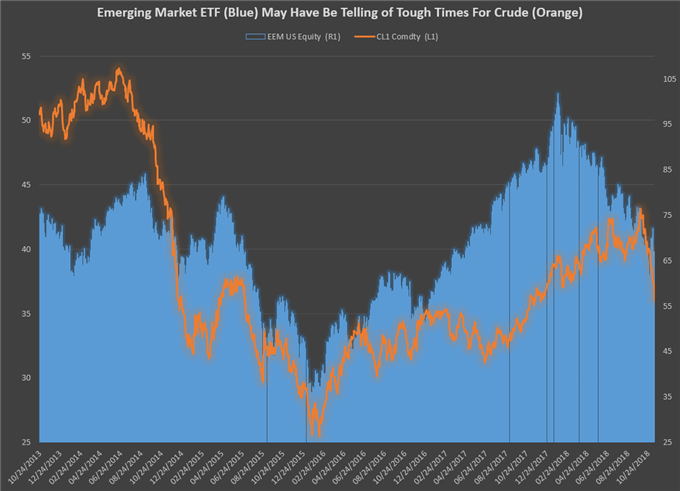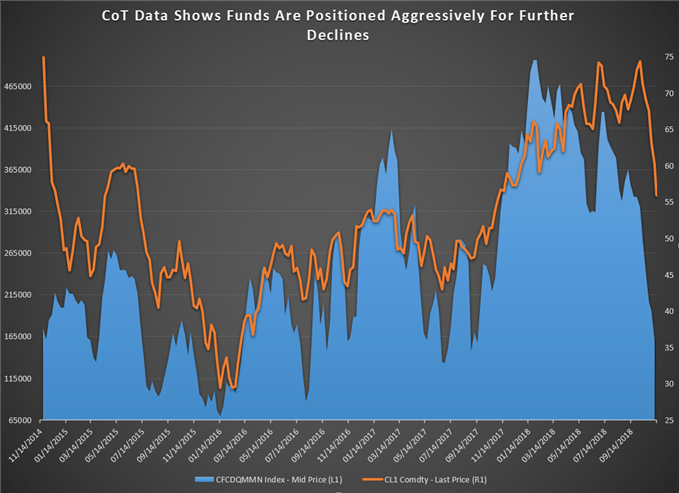
That escalated quickly. While energy markets were moving higher under potential supply shocks, a domino of events in global macro markets shifted the conversation to too much supply relative to possibly shrinking demand.
Commodities are one of the pure supply and demand markets left, and when the shifts in the balances of demand or supply arise, sharp price moves often result.
This fundamental walkthrough of Crude’s breakdown will walk through four lenses of viewing the breakdown that may show a v-bottom may be difficult to actualize despite RSI(14) being the most oversold since 2014.
WE’LL TAKE A FUNDAMENTAL LOOK AT CRUDE’S BEAR MARKET THROUGH FOUR LENSES:
WE’LL TAKE A FUNDAMENTAL LOOK AT CRUDE’S BEAR MARKET THROUGH FOUR LENSES:

Data Source: Bloomberg
The chart above shows the toping process that happened early in the year on EEM. EEM has fallen ~24% on the back of trade wars concerns and limited demand from China and other formerly strong emerging markets. Much of this drop has accelerated as the US Dollar has strengthened on the back of the Federal Reserve’s persistent hike of interest rates with views building that 3-4 hikes could be coming in the next year.
For energy demand, emerging markets are a near necessity as their demand tends to convert less from services and consumption as in developed markets and into real estate development and industrial demand. Therefore, the sharp drop in EEM over 2018 has also eaten into the perceived demand for crude.
INSTITUTIONAL POSITIONING SHOWS AGGRESSIVE BIAS LOWER

Data source: CFTC, Bloomberg
Money managers have fallen out of love with crude. The chart above shows the net positions, which has fallen steadily over the year gave the move higher in crude through early October was standing on hollow legs.















